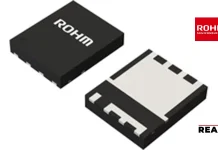Recently, the news has been filled with big, impressive satellite launches, but now there’s a new trend of small satellite launches. These smaller satellites are changing the way we explore space and observe our planet. They’re becoming more and more popular for all kinds of space missions. The big question is: how small are these satellites, and what impact will these small satellites have on our ability to learn about and interact with space?
So, let’s dive in and quench the curiosity.
What is a Small Satellite?
A small satellite, also known as a smallsat or miniaturized satellite, has a low mass and size, usually under 1,200 kg (2,600 lb). They are built small to reduce the large economic cost of launch vehicles and the costs associated with construction. They are particularly useful for purposes such as gathering scientific data, radio relays, and remote sensing.
However, the various space missions need compact and lightweight satellites, so their popularity in the aerospace industry has risen. According to Extrapolate, the global small satellite market is estimated to accrue revenue of $11.25 billion by 2030.
Key Types of Small Satellites
Smallsats are classified into various types depending on their mass. Below is a comprehensive breakdown of the different types of smallsats:
- Femto Satellite: These are the smallest satellites and have a wet mass between 10 and 100 grams. These satellites are specially designed for specific applications that require very compact and lightweight satellites.
- Picosatellite: These are the 2nd-smallest satellites that have a weight of less than 1 kg and are suitable for various purposes, such as research and technology demonstration.
- Nanosatellites: These smallsats weigh 1–10 kg. Nanosatellites are primarily ideal for non-military purposes such as environmental monitoring and geographical mapping.
- Microsatellite: These types of satellites have a mass of 10–100 kg and can be used in remote sensing, scientific research, and technology demonstration.
- Mini satellites: They have a mass between 201 and 600 kg and are mainly used in earth observation. These satellites are also useful in communication, navigation, weather assessment, and disaster management.
Why is a Small Satellite Important?
Smallsats are an essential element in revolutionizing space exploration and technology. Their compact size and lower production costs enable more frequent and diverse missions. They facilitate rapid deployment, enabling quick responses to evolving needs in Earth observation, communication, scientific research, and technology demonstration.
Small satellites also empower emerging spacefaring nations and commercial entities to participate in space activities. Their versatility and cost-effectiveness open doors for novel applications and advancements, making space more accessible and inclusive.
Role of Small Satellite Conference & NASA in Small Satellite Technology
Along with the various small satellite lunch companies, the Small Satellite Conference organization plays a vital role in highlighting the importance of small states. The conference will likely cover various aspects of small satellite technology, applications, and industry trends. It is an important event for professionals and enthusiasts in the satellite industry, as it provides a platform for discussing advancements, innovations, and prospects in small-scale technology.
Similarly, NASA has actively showcased its missions, launches, opportunities, and announcements in small states. Its scientific exploration missions, such as the small satellite of Jupiter, demonstrate its potential for cutting-edge scientific research and exploration.
3 Innovations in Small Satellites Changing the Aviation Landscape
Below are three major technological advancements in the field of smallsats that are shaping the space exploration industry.
1. Advanced Materials and 3D Printing
Advancements in materials science and 3D printing have significantly decreased small satellite launch costs and spacecraft manufacturing costs. The use of advanced materials, such as carbon fiber and advanced composites, has reduced the overall weight of rockets. On the other hand, 3D printing or additive manufacturing has expedited the production of rocket engines, spacecraft components, and portable small satellite launch vehicles.
In this domain, Thales Alenia Space has integrated 3D-printed parts into communications satellites, with a focus on reducing the buy-to-fly ratio and increasing production rates. The company has successfully orbited numerous satellites fitted with 3D-printed parts, showcasing the application of 3D printing in satellite manufacturing.
2. Miniaturized SAR
Current trends in synthetic aperture radar (SAR) platform design involve miniaturized satellites carrying SAR, which are launched in multiples to form a SAR constellation. This approach allows for comprehensive coverage of remote areas or vast regions, providing valuable data for Earth observation and monitoring.
One pioneering Japanese company, Synspective, has launched its debut SAR satellite, striX, and has been actively involved in SAR satellite data and solutions. On March 13, 2024, this satellite successfully reached its target orbit. The company has also established partnerships for SAR-based analysis, distribution, and commercialization of SAR solutions, showcasing its commitment to advancing SAR technology through miniaturized satellite platforms.
3. Satellite Internet of Things (IoT)
The integration of satellite IoT technology is facilitating robust connectivity across industries while supporting 5G and upcoming 6G capabilities. Furthermore, this technological innovation is enhancing the overall capabilities and efficiency of satellite operations.
This is exemplified by Astrocast, which specializes in providing advanced satellite IoT communication services. The company has developed a network of nanosatellites to deliver reliable and cost-effective IoT connectivity for various industries.
In a Nutshell
Small satellites have emerged as powerful tools, transforming the landscape of space exploration and technology. Their compact size, cost-effectiveness, and versatility have opened new frontiers for space missions and applications. Introduction to Advanced Materials, 3D Printing, and Satellite Internet of Things (IoT) technologies are shaping the landscape of small satellites. With advanced technologies like the miniaturized SAR, detailed coverage and monitoring of vast regions have become possible.
With the active involvement of organizations and the burgeoning growth of smallsat launch companies, these compact spacecraft are driving innovation, accessibility, and the democratization of space. As small satellites continue to expand their reach, they are shaping the future of space exploration and technology.
Browse More Posts:-
Global Auto Catalyst Market Future Trends, Revenue Growth & Leading Players, Forecast By Year 2031
Global Auto Catalyst Market Future Trends, Revenue Growth & Leading Players, Forecast By Year 2031
Global Auto Catalyst Market Future Trends, Revenue Growth & Leading Players, Forecast By Year 2031




